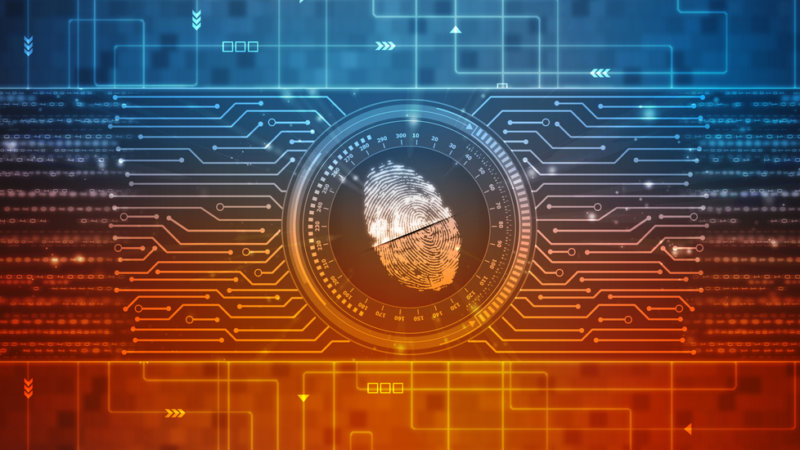Digital Forensics: Turning the Tides in a Criminal Investigation
by nlqip

What is Digital Forensics?
Digital Forensics is a term that almost no one knows what it stands for…Digital Forensics can turn the tides completely in a criminal investigation and it is more important then ever in the current digital age in which we all live. The shift to the digital world brings many challenges indeed, but it also opens up opportunities in the shape of traceability and records. Everything that is done in an electronic device leaves watermarks, inputs that can be traced and followed if needed. Digital Forensics, therefore, is the science responsible to crack those marks.
According to US-CERT forensics publication, digital forensics can be defined in the following way:
“Digital forensics is the discipline that combines elements of law and computer science to collect and analyze data from computer systems, networks, wireless communications, and storage devices in a way that is admissible as evidence whether during an investigation inside any organization or in a court of law.”
Digital Forensics can also be described in simpler terms as the process looking for digital evidence when a crime/security breach is committed. This digital evidence “is information stored or transmitted in binary form that may be relied on in court. It can be found on a computer hard drive, a mobile phone, a personal digital assistant (PDA), a CD, and a flash card in a digital camera, among other places. Digital evidence is commonly associated with electronic crime, or e-crime, such as child pornography or credit card fraud. However, digital evidence is now used to prosecute all types of crimes, not just e-crime,” as the USA National Institute of Justice described it.
It is important to bear in mind that in digital forensics, it is key not only the tracing of the data, but also the means followed to do so. Not everything is allowed when cracking other people’s devices down, as data can be easily manipulated along the way. That is why there is a really strict procedure that cannot be skipped or omitted, called Chain of Custody.
The chain of custody, lays down all the steps that an investigator must follow to make sure that the data is genuine and as such can be used in a court of law. It is a must-do procedure to record evidence documentation in chronological events. It is a critical step in gathering digital evidence as the chain of custody must hold all individuals participating in the whole digital forensics examination process.
Digital Forensics is an important tool for today’s investigators, not only in terms of law enforcers, but also for companies. Many organizations rely mainly on information technology to process or handle their services internally and externally, and as such, they become more exposed to e-crime. In the case of a security breach, Digital Forensic tools can trace down the incident all the way to where the crime was perpetrated and following the Chain of Custody procedure, extract the necessary evidences left on all devices exposed.
Companies can benefit greatly from Digital Forensics. The solutions offered by this recent field, help organizations and entities to preserve evidence integrity during an incident. The processes used by Digital Forensics allow the company to collect, identify and validate the digital information for the purpose of reconstructing past events related to the incident under the investigation. Likewise, Digital Forensic tools can help companies to keep track of risk management and control; to apply organizations policies and standards after a thorough comprehension of past incidents and predictions; to audit or investigate employees abuse and determine the appropriate actions with employees.
Digital Forensics solutions have become a critical toolkit within any given organization. It does not only provide important evidence when an incident takes place but also allows predicting possible future attacks. The use of these solutions also allows a better comprehension of how important it is to keep data safe and leverage new mechanisms of security and control within the enterprise.
Published by Aghiath Chbib
Results-oriented, adaptable, established executive equipped with 20 years of success driving global business in large, multimillion-dollar organizations and private start-ups. Extensive experience spearheading operations within complex, technology-driven environments ensuring adherence to organizational strategies and best practices. Expert at building and directing high- performing, cross-functional teams with a focus on leadership, collaboration, and continuous growth.
Business-minded visionary adept at leveraging technologies to achieve marketplace advantage and meet strategic goals and objectives. Dedicated to employing deep knowledge of industry-leading systems and processes while driving business impact, ROI, and performance. Technically-advanced, trusted professional and renowned expert in cybersecurity, AI, Blockchain, and digital forensics, as well Aghiath is an Author in Intelligenthq, bizcatalyst360, Openbusinesscouncil, and Hedgethink.
View all posts by Aghiath Chbib
Published
Source link
lol
What is Digital Forensics? Digital Forensics is a term that almost no one knows what it stands for…Digital Forensics can turn the tides completely in a criminal investigation and it is more important then ever in the current digital age in which we all live. The shift to the digital world brings many challenges indeed,…
Recent Posts
- Windows 10 KB5046714 update fixes bug preventing app uninstalls
- Eight Key Takeaways From Kyndryl’s First Investor Day
- QNAP pulls buggy QTS firmware causing widespread NAS issues
- N-able Exec: ‘Cybersecurity And Compliance Are A Team Sport’
- Hackers breach US firm over Wi-Fi from Russia in ‘Nearest Neighbor Attack’
